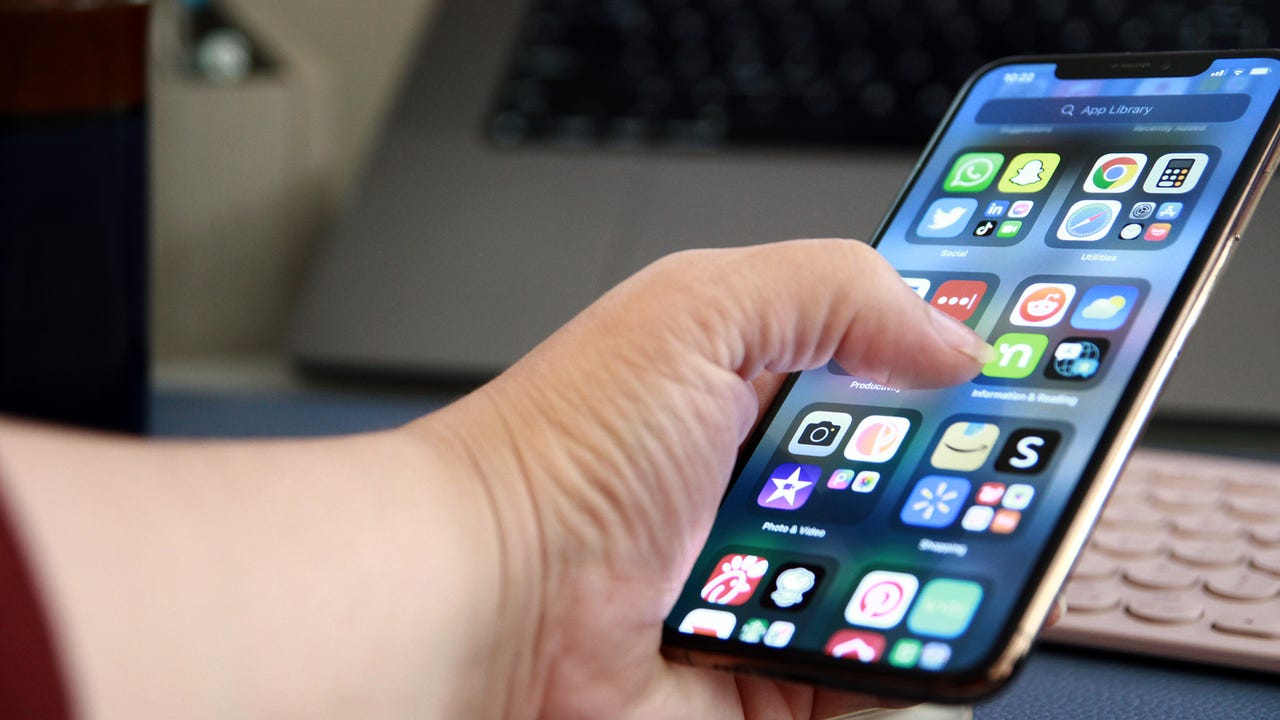'ZDNET Recommends': What exactly does it mean?
ZDNET's recommendations are based on many hours of testing, research, and comparison shopping. We gather data from the best available sources, including vendor and retailer listings as well as other relevant and independent reviews sites. And we pore over customer reviews to find out what matters to real people who already own and use the products and services we’re assessing.
When you click through from our site to a retailer and buy a product or service, we may earn affiliate commissions. This helps support our work, but does not affect what we cover or how, and it does not affect the price you pay. Neither ZDNET nor the author are compensated for these independent reviews. Indeed, we follow strict guidelines that ensure our editorial content is never influenced by advertisers.
ZDNET's editorial team writes on behalf of you, our reader. Our goal is to deliver the most accurate information and the most knowledgeable advice possible in order to help you make smarter buying decisions on tech gear and a wide array of products and services. Our editors thoroughly review and fact-check every article to ensure that our content meets the highest standards. If we have made an error or published misleading information, we will correct or clarify the article. If you see inaccuracies in our content, please report the mistake via this form.
How to set better screen-time boundaries on your iPhone

I'll be the first to admit that I use scrolling through socials as a crutch -- a quick fix to alleviate boredom that turns into the ultimate procrastination tool. I, like many these days, have conditioned myself to look at life through a screen.
See also
I've tried to "unlearn" my scrolling habit by completely detoxing, only to binge-scroll when I return to the socials.
But recently I turned to an in-between that encourages scrolling more intentionally: Setting screen time limits on my iPhone.
My goal is to develop enough discipline to know when it's time to step away from content entirely.
Also: How to set app time limits on your Android
But for now I rely on my iPhone to set the boundaries for me. Here's how you can, too.
Stop doomscrolling: How to set screen time limits on your iPhone
Your iPhone settings let you set a time limit for any app you have downloaded. While I set limits mostly for social media, you can also set them for any app you want some space from.
1. Face your screen-time stats in the settings menu
First, head to the hub of any phone, the Settings app, which is signaled by a gear icon. Then, click on the Screen Time option from the menu.
After you've selected the Screen Time button, you'll be confronted with your daily average stats, which -- warning -- might be a little startling.
Looking at my average screen time in my iPhone settings definitely was as a wake-up call. I took to the App Limits menu to limit my time on the apps.
2. Select which apps you want to limit
After you've come to terms with the fact that passive scrolling adds up way more than you thought, select the App Limits option from the menu. From there, select the Add Limit button.
Also: 5 iOS 16 features I can't live without now
You'll then see a list of apps organized by category. Select which category you want to limit screen time in, and from there, a drop-down menu with specific apps will appear.
Once you've selected the apps, click Next.
The two usual suspects that enable my doomscrolling are Instagram and TikTok. So, I elected to limit my time spent on them.
3. Set a limit
You'll now be invited to select how much time you want to spend using the apps you selected.
I gave myself an hour limit on both TikTok and Instagram to be allocated throughout my day.
Note that if you select the apps all at the same time before pressing Next, each will have the same time limit. So if you want your time limit to vary from app to app, select the apps in different batches.
Also: Which iPhone is right for you and how do the different models compare?
Once you've set your time limits, the screen interface will show that the App Limits button is toggled on (green) as well as the apps that you've selected to limit.
You can press the Add Limit button and repeat the process if you want to place a different time limit on another app.
Since I selected Instagram and TikTok at the same time, I had to set them both to the same time limit, which I chose to be one hour.
4. Set an "Ignore Screen limit" passcode to resist any temptation
The most important thing is making sure that you don't set the limits to just ignore them. If you, like me, know you'll be way too temped to just ask for 15 more minutes a few times over, set a screen time password.
While passwords also aren't completely foolproof, it's an extra barrier between you and your scrolling habit, giving you one more opportunity to self-regulate.
Also: iOS 16: How to edit or delete sent iMessages
To set a password, tap Screen Time in settings (as you did to set limits) and then select the Use Screen Time Passcode option toward the bottom of the menu.
You'll then be prompted to set a password. Tip: Use a different password than the one you use to unlock your phone so that you have to fully -- rather than mindlessly -- think about entering it.
After your password is set and you've entered your Apple ID, you'll be prompted to enter it before ignoring any app limits.
If you really want to add an extra barrier, set a screen time passcode. That extra step might be the extra struggle you need to make ignoring limits less of one.
FAQs
Can you set screen time limits on iPhone?
Yes, you can set a time limit for different apps by making use of the iPhone or iPad's App Limits option. Go to your device's Settings > Screen Time > tap on the App Limits option from the menu > select which apps you want to set a particular limit on (note that you'll have to select in batches if you want to set different time limits across a variety of apps) and choose your time limit.
How do screen limits work on iPhone?
Screen limits let you choose a set amount of time you spend on given apps. Depending on how much space you want from a given app, you can set anywhere from 1 minute to 23 hours -- those are extremes, but you have a lot of freedom to choose your boundaries. Once you've timed out, a notification from iPhone will appear, locking the app for the remainder of the day. While it's tempting to ignore the limit and extend your time, try not to give in.
Why can my child ignore screen time limits on iPhone?
Once the set screen time has expired on a certain app, iPhone will notify users that their time is up. On the bottom of the notification, however, is the option to ignore the limit. Users can ignore the limit for another minute, 15 minutes, or the entire day. The lock will then be lifted accordingly. iPhone makes it a little too easy for you -- or your child -- to easily ignore limits, so it takes a bit of willpower to resist. But, there is a way to set a passcode that makes screen times harder to ignore. See the instructions earlier in this article.
If you're a parent looking for stricter controls, check out our picks for the best parental control apps.
